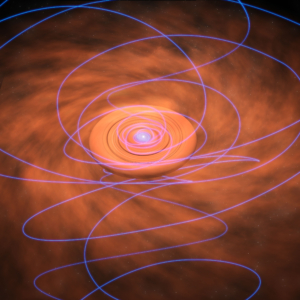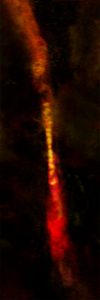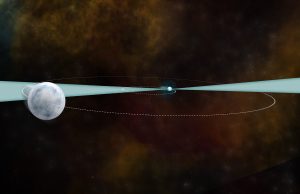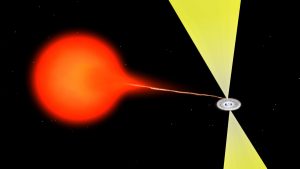A detailed study of young stars and their surroundings has produced dramatic new evidence about how multiple-star systems form and how the dusty disks that are the raw material for planets grow around young stars.
Twisted Magnetic Fields Give New Insights on Star Formation
Using new images that show unprecedented detail, scientists have found that material rotating around a very young protostar probably has dragged in and twisted magnetic fields from the larger area surrounding the star.
ALMA dwarf star magnetic powerhouse
ALMA finds cool, dim dwarf star is super magnet.
Image Release: Protostar Growth Spurts
Jets from protostar reveal episodic growth spurts.
Gravitational Constant Appears Universally Constant, Pulsar Study Suggests
GBT helps study gravity in distant star system.
Neutron Stars Strike Back at Black Holes in Jet Contest
Some neutron stars may rival black holes in their ability to accelerate powerful jets of material to nearly the speed of light.











